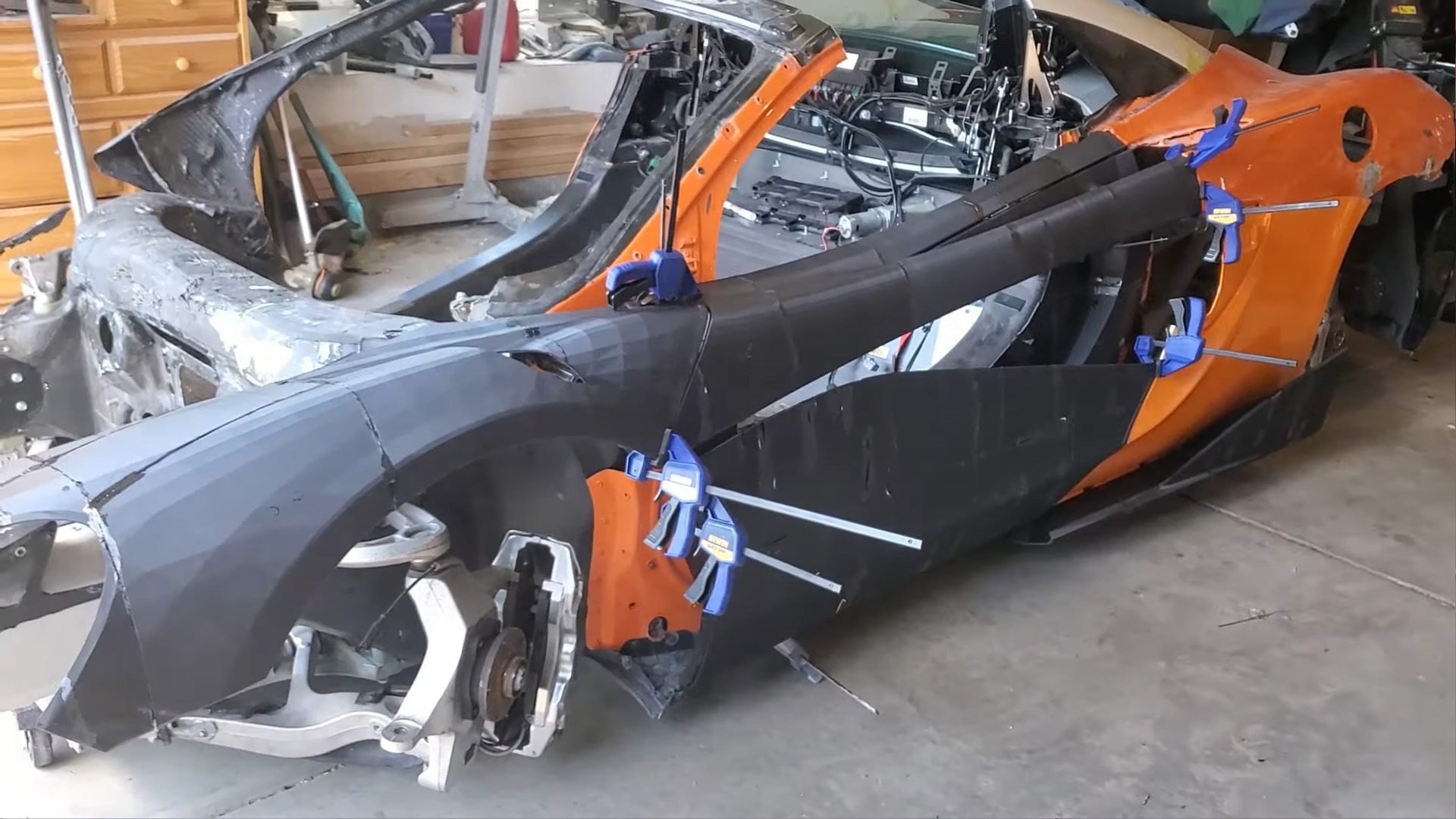

3D printing is a powerful tool, and its application in the automotive space is picking up steam in a serious way. OEMs are very interested, sure, but the really exciting application is being done by normal people in their garages, like YouTuber Sterling Backus, aka lasersterling. After 3D printing an entire body for a replica Lamborghini Aventador, he’s decided to rebuild a completely destroyed McLaren 600LT. And I do mean completely destroyed.
The car’s structural carbon tub is mostly intact, but it is going to require some repair. That’s not the interesting part, though. The interesting part is that Backus plans to 3D print a new body for the car, which is a more complicated process than you may think. It’s worth noting that he’s done this before with his replica Lamborghini, so this is not a far-fetched pipe dream of a project. He will also have to buy a lot of parts from McLaren to make this project work, obviously.



3D printing a car body is not as simple as finding the right files and hitting print. Most 3D printers cannot print entire body panels in one shot. Therefore, each panel must be printed in small pieces and bonded together. That’s not all, though. 3D-printed plastic parts, at least using the Fused Deposition Modeling process, are not very strong and they have poor surface finish. As a result, it’s best practice to skin the 3D-printed parts with something like carbon fiber, fiberglass, kevlar, or another resin/textile composite. That’s what Backus has done in the past, and what he plans to do now.
This allows for body panels to be made without any specific tooling, which makes it very inexpensive as compared to conventional body panel construction. The limitation is that it takes a long time to make just one panel, but that’s not a problem for Backus. He also has a complete 3D model of a 600LT, which simplifies the process considerably. 3D scanners are still relatively expensive and can be time-consuming to use.

This project is just one example of how 3D printing will take the homebuilt car scene to the next level. Larger format printers are gradually coming down in price, with build areas for hobby-grade machines approaching and exceeding one meter already. Likewise, technology like resin-based stereolithography may eventually mean body panels that are just as strong as conventionally molded plastic alternatives.
None of this mentions powder-based industrial additive manufacturing techniques, like multi-jet fusion or selective laser sintering, either. They allow for very strong parts with almost no visible layer lines or post-processing necessary. While not quite accessible to your average Joe, both services are becoming cheap enough for normal people to access.
Got a tip? Send us a note: tips@thedrive.com